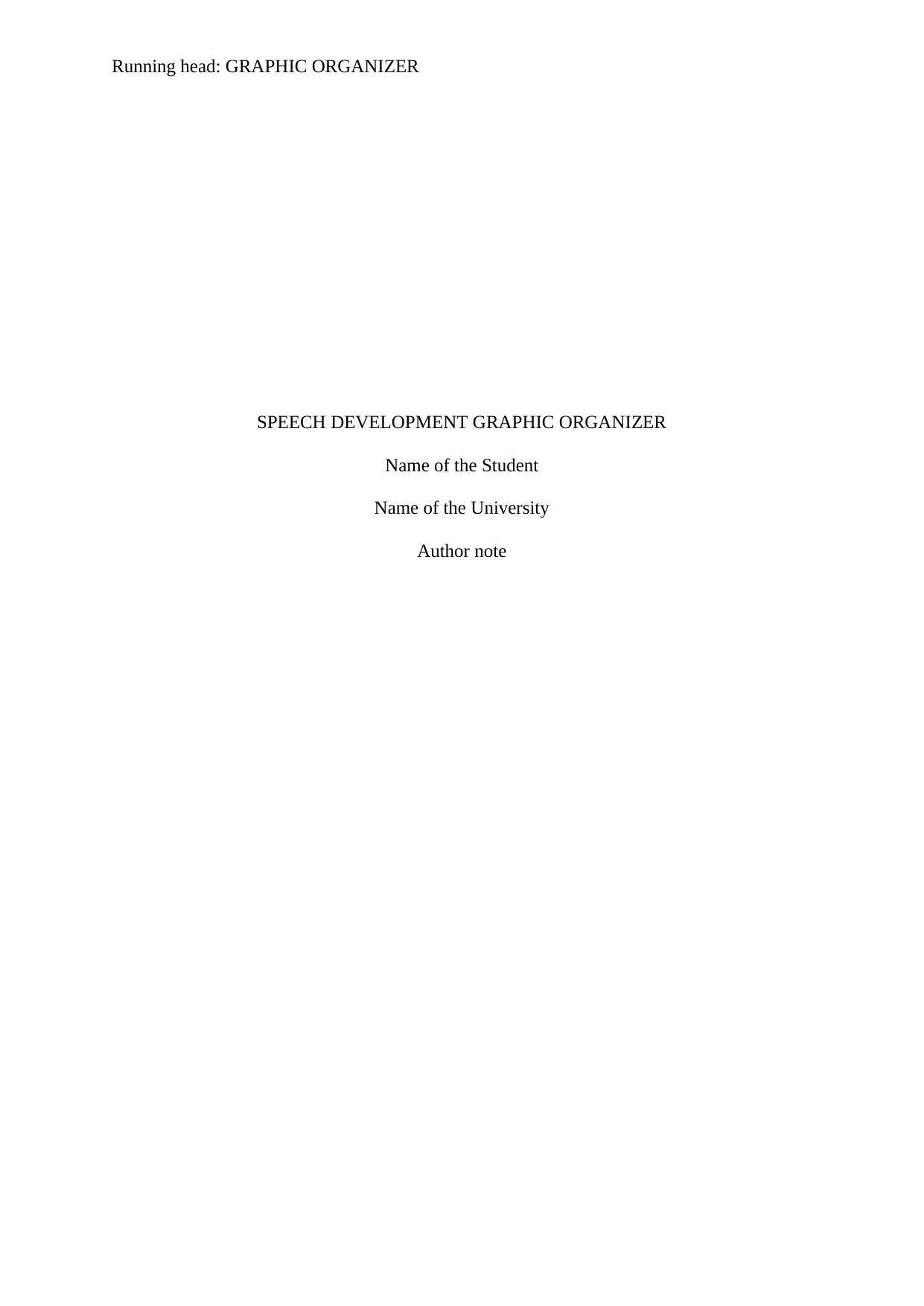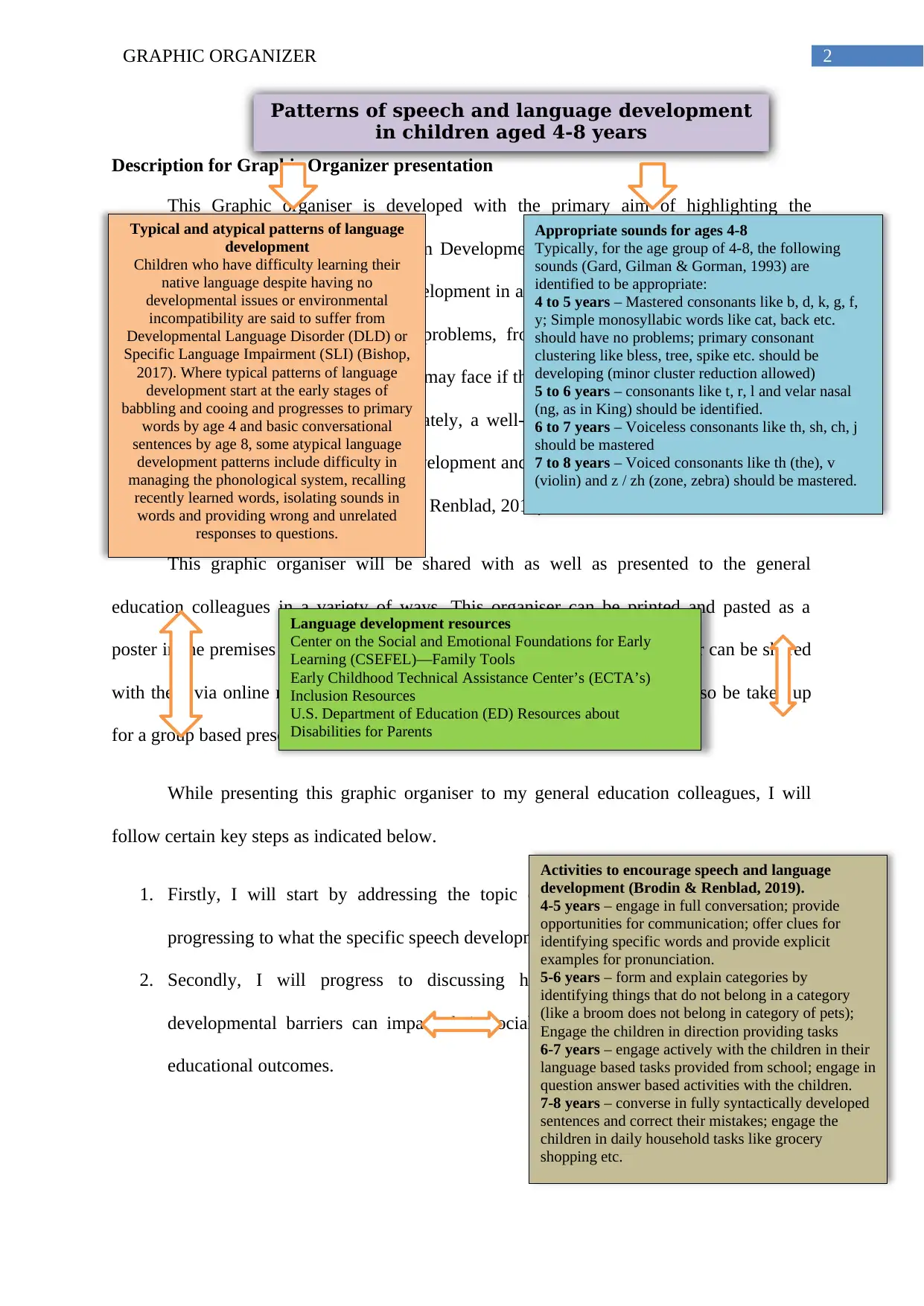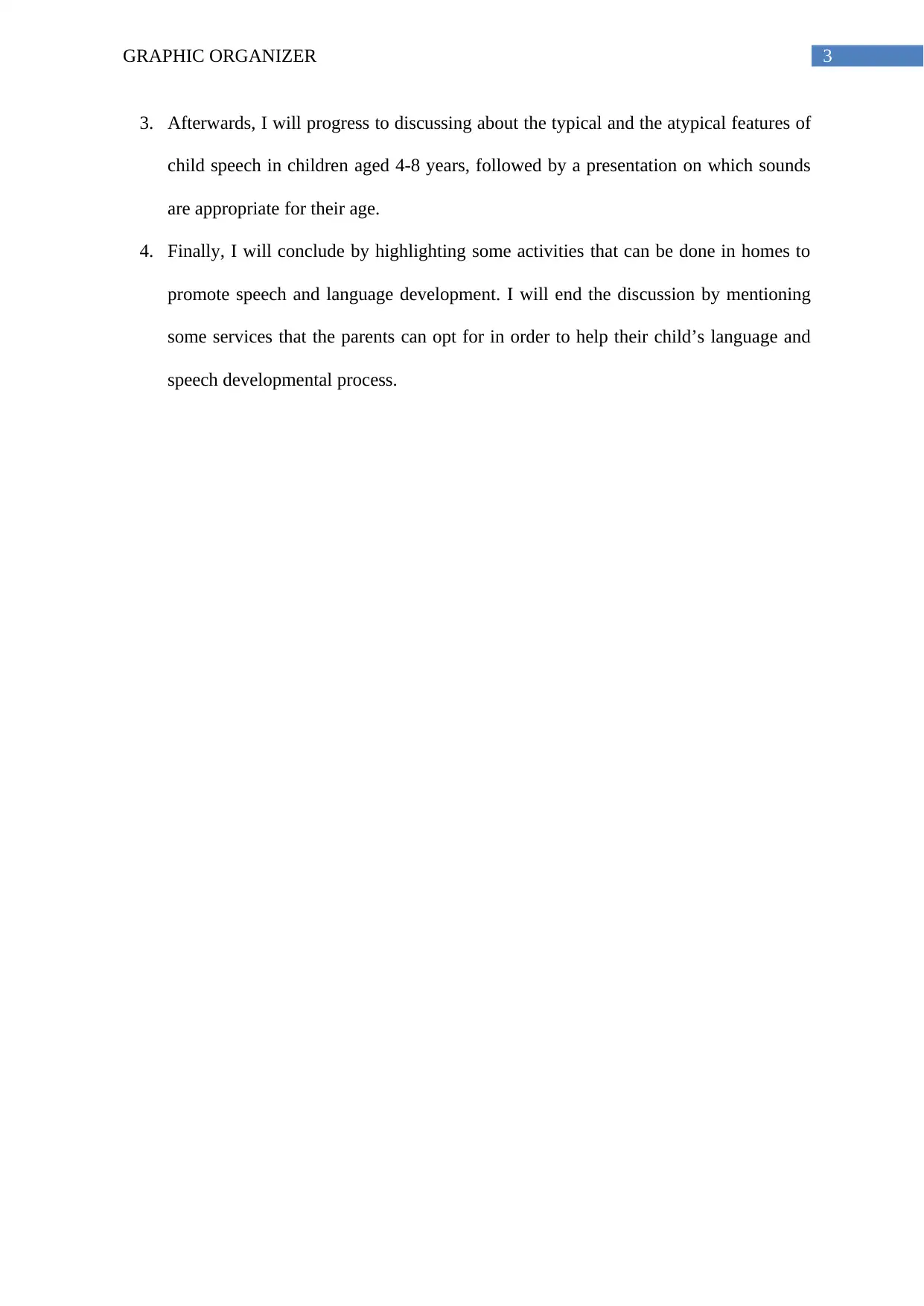Speech and Language Development: Graphic Organizer for Educators
VerifiedAdded on 2022/11/15
|5
|1709
|66
Project
AI Summary
This assignment presents a graphic organizer designed to educate general education colleagues on speech and language development in children, particularly those with Developmental Language Disorder (DLD). It explores the strong relationship between speech development and literacy, highlighting how poor speech can lead to reading difficulties and behavioral issues. The organizer covers typical and atypical patterns of language development, appropriate sounds for children aged 4-8, and activities to encourage speech and language skills at home. It also mentions resources such as the Center on the Social and Emotional Foundations for Early Learning and the U.S. Department of Education. The presentation aims to inform educators about the importance of early speech development and provide them with tools to support children's language acquisition and literacy development. The organizer will be shared through various channels, including print, online resources, and presentations. The project will start with addressing the topic of speech development in children, progressing to what the specific speech developmental barriers are. Secondly, it will progress to discussing how the aspect of speech related developmental barriers can impact their social, behavioural and most importantly educational outcomes. Afterwards, it will progress to discussing about the typical and the atypical features of child speech in children aged 4-8 years, followed by a presentation on which sounds are appropriate for their age. Finally, the project will conclude by highlighting some activities that can be done in homes to promote speech and language development. It will end the discussion by mentioning some services that the parents can opt for in order to help their child’s language and speech developmental process.
1 out of 5






![[object Object]](/_next/static/media/star-bottom.7253800d.svg)